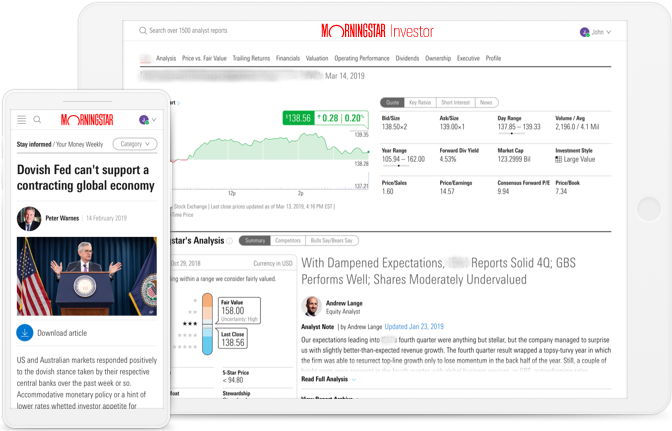ETFs
Exchange-traded funds are an easy and affordable way to gain exposure to a range of local and international asset classes and thereby diversify your portfolio, but like all investments, there are risks you should be aware of. Get the latest ETF data and news from our analysts, see our proprietary ETF model portfolios & discover how to find the best ETFs for your goals.
Latest ETF performance data, prices & news ETF model portfolios Our top rated ETFs Investing in ETFs
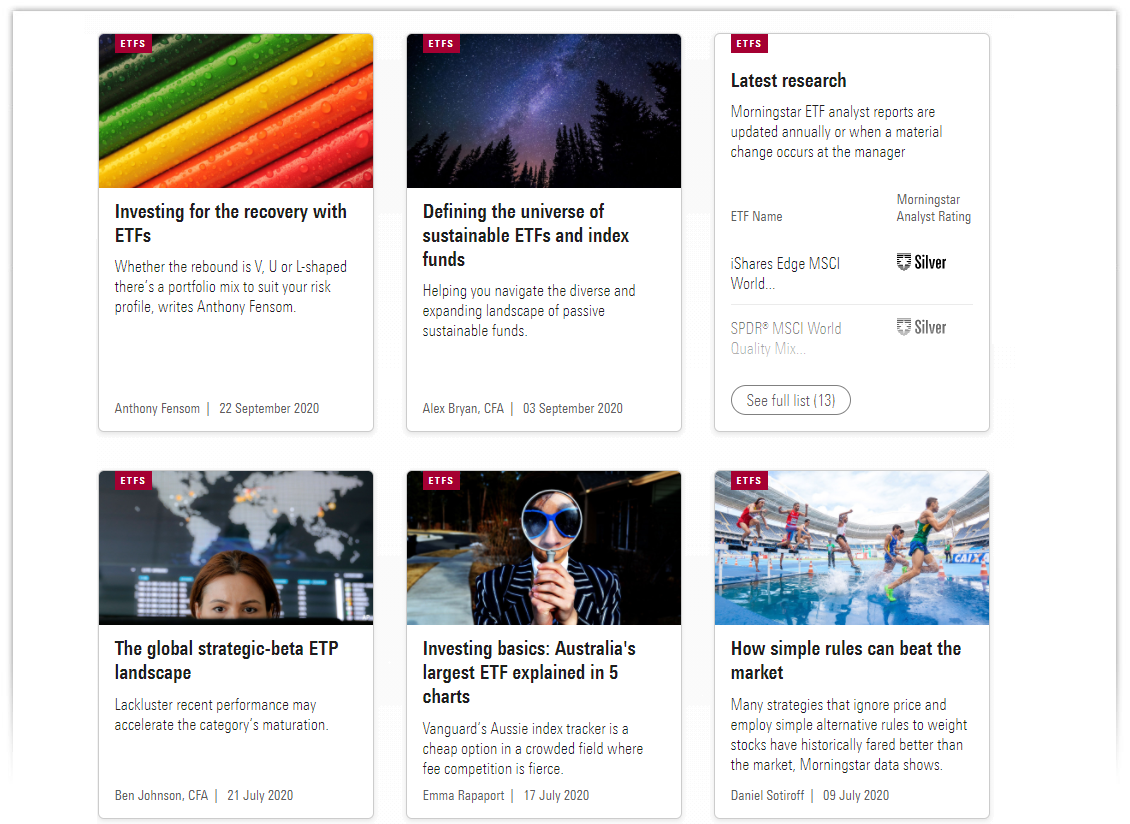
Latest ETF performance data, prices & news
Get the latest ETF performance data, prices and news from our analysts.
ETF model portfolios
Morningstar's ETF Model Portfolios are a series of diversified, model portfolios that use a passive investment framework to offer low-cost market exposure via exchange traded funds (ETFs). Asset allocations have been devised using Morningstar's strategic asset allocation framework and long-term capital market assumptions. ETF selection relies on Morningstar's qualitative and quantitative ETF research.
Key benefits of the Morningstar ETF Model Portfolios
- They provide investors with a template that offers diversification by individual security, sector, asset class and ETF provider;
- Ongoing monitoring of portfolio asset allocation and constituents;
- Formal performance updates provided on a quarterly basis;
- Detailed research reports available on individual ETFs;
- In addition to ongoing review, the models are re-assessed in the event of changes to the underlying ETFs, indices, investment processes, or other material events.
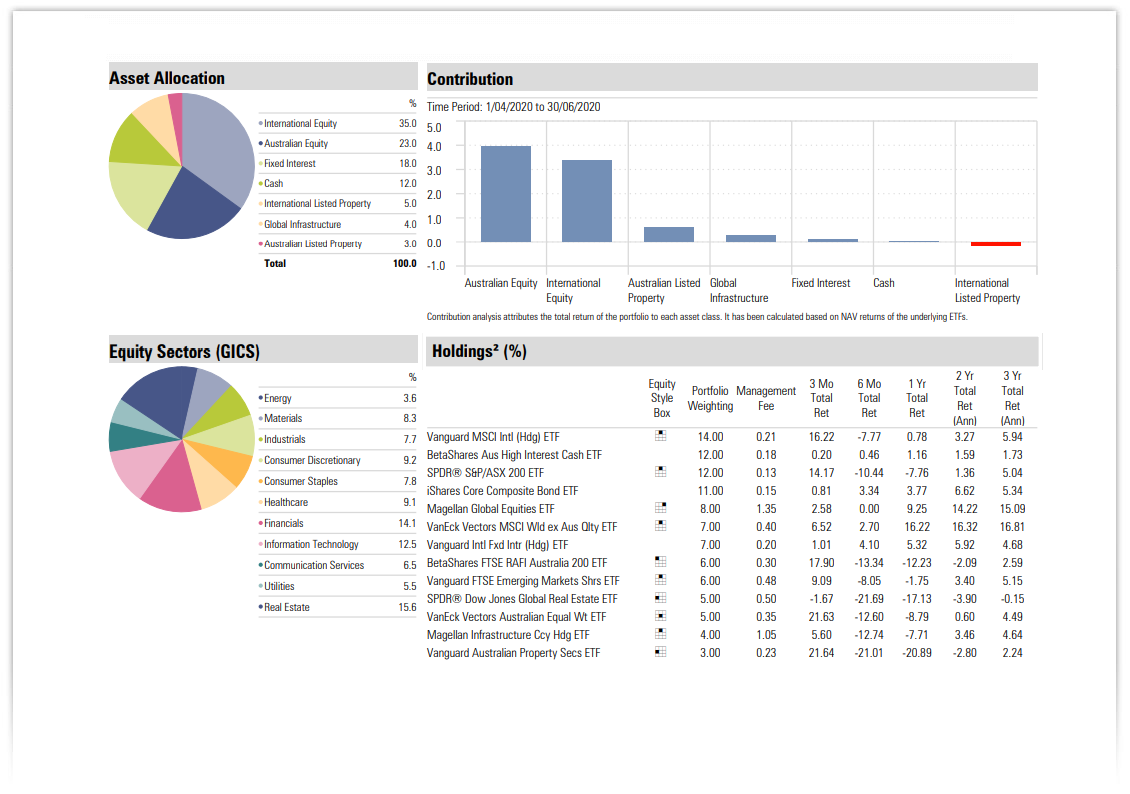
About Us
We’re all in for investors.
Morningstar is a leading source of independent investment research for stocks, funds, ETF's, credit, and LIC's as well as financial data, news, investing tools.
It started with an idea—one great idea from a 27-year-old stock analyst. Joe Mansueto thought it was unfair that people didn’t have access to the same information as financial professionals. So he hired a few people and set up shop in his apartment—to deliver investment research to everyone. We didn’t know then what the company would look like today, but we knew the commitment to our mission—to empower investor success—wouldn’t change. Now, we operate through wholly- or majority-owned subsidiaries in 32 countries. We’ve empowered investors all over the world, and we’re continuing to look for new ways to help people achieve financial security.
Our research is independent, which means we do not charge or accept payment or commissions from fund managers, listed companies or other product issuers to produce research on their products. Our mission remains true today, 39 years after that one great idea – we believe in the democratization of investment information, research and data. Our mission is at the core of everything we do – to empower investor success.


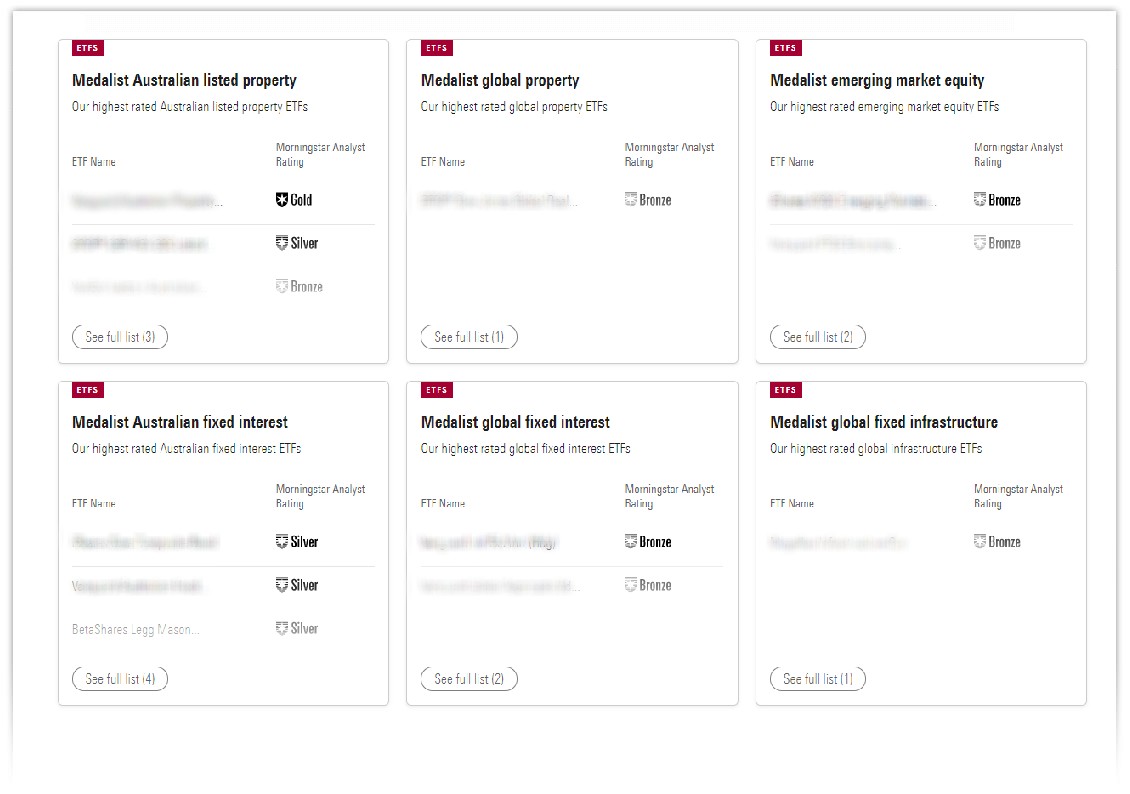
Our top rated ETFs
Morningstar Analyst Ratings are assigned globally on a five-tier scale running from Gold to Negative.
The top three ratings, Gold, Silver and Bronze, all indicate that our analysts think highly of a fund; the difference between them corresponds to differences in the level of analyst conviction in a fund’s ability to outperform its benchmark and peers through time, within the context of the level of risk taken. The Analyst Rating does not express a view on a given asset class or peer group; rather, it seeks to evaluate each fund within the context of its objective, an appropriate benchmark, and peer group.
To see our current medallist ETFs, sign up for a FREE 4-week trial^ of Morningstar Investor. No credit card required.
Australian equity

Australian listed property

Global property

Emerging market equity

Australian fixed interest

Global fixed infrastructure

Sustainable ETFs
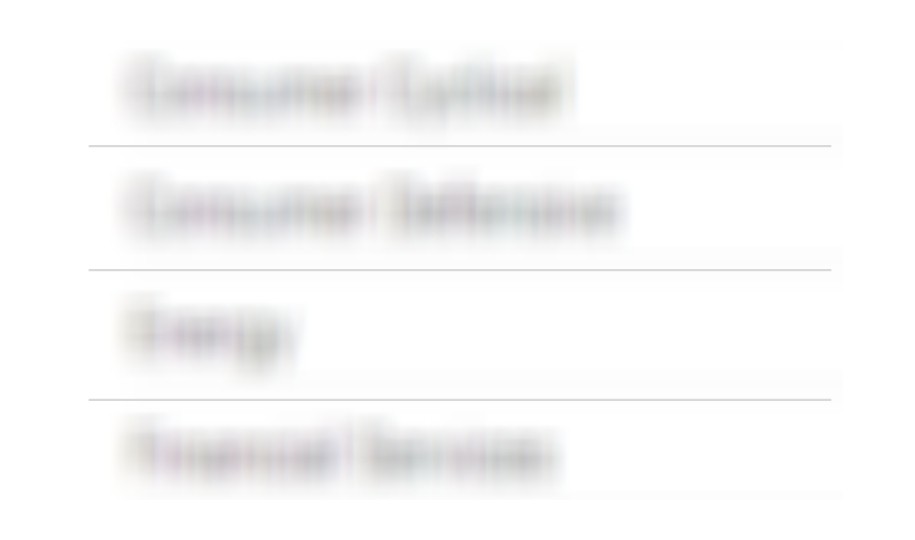
An exchange-traded fund, or ETF, is a collection of investments that trade just like a stock on an exchange.
ETFs are commonly used get returns similar to a specific market index. For example, you could invest in an ETF that mimic its movements of the S&P/ASX 200.
Most ETFs are passively managed. Managers who oversee passive ETFs will take a hands-off approach, simply ensuring that their ETFs replicate their designated indices. A manager will not intervene if an index takes a turn for the worse. In other words, the manager is being passive.
Today, there is a wide variety of passive ETFs in the Australian market. There are those which track segments of the local sharemarket like VAS. Then there are others that track global—developed and emerging—markets, such as the S&P500 Index. Newer ETFs now provide exposure to a single commodity or a basket of commodities.
A handful of active ETFs are also available to investors.
Active ETFs are run by a manager or a management team that attempts to outperform their designated index. But outperformance is not guaranteed; sometimes an ETF can do better than its index, but sometimes it can do worse.
The share price for an ETF is based on the net asset value (or NAV) of the underlying stocks the ETF tracks. An ETF typically trades at prices that match this NAV closely. However, ETFs may trade at prices above or below their NAV, as ETFs are subject to supply and demand. These price deviations should, however, be relatively short-lived, as they create arbitrage opportunities which may be exploited by other market participants.
Advantages
- Exchange-traded funds are an easy and affordable way to gain exposure to a range of local and international asset classes and thereby diversify your portfolio.
Disadvantages
- The ease of trading ETFs can encourage two of the main ways that investors get in trouble: 1) Chasing returns and investing in a new hot stock or sector 2) Exiting the market during downturns.
Like any stock, an exchange-traded fund has two prices: a bid and an ask, the prices at which you can sell and buy shares, respectively. The difference between the two is called the bid-ask spread, or spread. It is the transaction cost of buying then immediately selling a security (a round-trip trade). The spread compensates market-makers for the costs and risks they bear for keeping shares on hand.
In general, the narrower the spread, the more liquid an ETF is said to be. Liquidity is the ability of an asset to be traded without significantly moving the price and with minimal loss of value.
All but the most-liquid ETFs should be traded with limit orders, which specify a transaction price. Because of the in-kind creation/redemption mechanism discussed earlier, the true liquidity of an ETF is not determined by its asset size or its secondary market trading volume, but the liquidity of its underlying holdings. However, much of that liquidity may not be visible in the order book, which lists the number of shares and prices investors are willing to transact in a security at a given time. A limit order will often draw out hidden liquidity, making it cheaper to transact the ETF than the order book implies.
Horrible things can happen if you use market orders. They can “eat through” the order book of a less- liquid ETF before market-makers can react, creating big price swings. ETFs can also experience rare “flash crashes,” where their prices suddenly drop due to the withdrawal of liquidity by market-makers.
Today, there are over 200 ETFs listed on the ASX. There are ETFs that give you exposure broad market indexes, while others offer exposure to niche sectors such as cybersecurity. ETFs now also offer exposures to a variety of investment strategies such as active management and smart beta.
With so many ETFs choose from, how do you know which is the best for your portfolio?
Morningstar analysts evaluate over 70 ETFs trading on the ASX and identify those they think will be able to outperform in years to come. This includes ETFs from the five largest product providers in Australia (by total net assets - at 09-2019): Vanguard Investments Australia, iShares, BetaShares Capital, State Street Global Advisors (AUS) and VanEck Investments. Analysts also cover Active ETFs from providers AMP Capital, Magellan, Schroders, and Antipodes.
Costs – explicit costs like the expense ratio, and implicit costs like the cost of portfolio turnover – are paramount in running an index fund. Top-rated funds are among the lowest cost options in their category, relative to their actively and passively managed peers.
But costs are just one component of Morningstar's assessment of ETFs. Analysts scrutinise their performance relative to others in the category, both active and passive.
For passive products, analysts examine the fund's process – that is how the ETF are constructed, their underlying benchmarks, and the systems managers have put in place to achieve precise tracking of the benchmark.
Analysts also tend to favour parent firms that put investors' interest ahead of commercial goals, and monitor how the ETF is trading on the exchange. ETFs sometimes trade with wider than normal bid/ask spreads, or deviate substantially from their net asset value, or NAV, which can jack up the cost to investors.
Other issues considered by analysts:
- The amount of experience the team has in managing ETFs
- Rules dictating the balancing and reconstruction of the fund's benchmark
- Portfolio management approach – for examples full or synthetic replication
- Tracking issues that might arise
- How portfolio managers attempt to minimise trading costs
- The fund's distribution policy
- Firm's overall levels of transparency
- Firm's product development philosophy and its track record of launching new funds and shuttering unsuccessful ones
Medallist ratings are reserved for funds that analysts expect to deliver precise tracking of sensibly constructed indexes at a very low cost and backed by experienced managers. ETFs that analysts expect to outperform by the widest margin are rated Gold; next-highest conviction picks are rated Silver, followed by Bronze.
Medals are accompanied by the “analysts take” on the ETF – which includes their views on its suitability for investors, portfolio construction, fee and alternatives to consider.
Sign up for a FREE 4-week trial^ of Morningstar Investor to unlock access to our full list of:
- Medalist Australian equity ETFs
- Medalist global equity ETFs
- Medalist Australian listed property ETFs
- Medalist global property ETFs
- Medalist emerging market equity ETFs
- Medalist Australian fixed income ETFs
- Medalist global fixed interest ETFs
- Medalist global fixed infrastructure ETFs
No credit card required.
Use the Morningstar ETF screener to find the best ETFs
Morningstar's new Investor website helps filter the universe of over 200 Australian ETFs to discover Morningstar's top-rated ETFs. By using the ETF Screener tool, you can quickly compile and save a list of Gold, Silver and Bronze-rated ETFs across several asset classes.
You can screen by the following criteria:
- Fund management company
- Asset class
- Management style (active or passive)
- Morningstar analyst rating
- Dividend yield
- Management fee
- Total return
Sign up for a FREE 4-week trial^ of Morningstar Investor to unlock access to the Morningstar ETF screener. No credit card required.
1) Use limit orders
Use limit orders when trading ETFs. Investors tend to use market orders in instances where time is of the essence and price is of secondary importance.
Investors using market orders want to execute their entire order as soon as possible. For very large, very liquid ETFs that trade contemporaneously with their underlying securities, like SPDR S&P 500 ETF (SPY)*, market orders will likely result in fast execution at a good price.
But most of the 2400-plus exchange-traded products on the market are smaller and less liquid than SPY and its ilk and may also trade out of sync with their constituent securities.
In all cases, using limit orders is good practice. Limit orders will ensure favorable execution from a price perspective.
A buy limit order will fetch the buyer a price less than or equal to the limit price, while a sell limit order will transact at a price greater than or equal to the limit price.
What is the potential cost of using limit orders? Time and incomplete execution. That is, it may take longer for a limit order to be filled than a market order, and when that time comes it might not be completely filled.
These costs need to be weighed against the cost of being exploited by an opportunistic market maker looking to pick off market orders in thinly traded ETFs.
2) Trade when the underlying market is open
If you are trading an ETF that invests in securities that trade in markets outside the United States, it's best to trade the associated ETF when its constituents are actively changing hands in their home market.
For example, it would be best to trade Vanguard FTSE Europe ETF (VGK) during the morning while European markets are still open.
During these overlapping trading hours, it is easier for market makers to keep VGK's price in line with its NAV, as the stocks in its portfolio are still being bought and sold in real time across Europe.
Once European markets close, market makers rely on the fluctuations of the US market as a guide in setting prices, an inherently less-reliable touchstone.
Of course, some markets that are tracked by US-listed ETFs have zero overlap with US trading hours, like Japan. Investors trading ETFs like iShares MSCI Japan ETF (EWJ) should see tip No 1 above.
3) Don't trade near the open - or the close, for that matter
It's best to avoid trading ETFs just after the opening bell: ETFs may take a while to "wake up" in the morning. For a variety of reasons, it takes some time for all of the securities in their portfolios to begin trading.
Before all of an ETF's constituents are trading, market makers may demand wider spreads as compensation for price uncertainty.
It's also a good idea to avoid trading ETFs as the closing bell approaches. As the market winds down toward day's end, many market makers step back from the markets to limit their risk headed into the close. At this point, spreads tend to widen as there are fewer actors actively quoting prices.
In light of these considerations, it makes sense to wait about 30 minutes after the opening bell to trade an ETF and to avoid trading during the half hour leading into the market's close.
4) If you're making a big trade, phone a friend
For investors looking to execute a large trade in an ETF, it makes sense to engage the help of a professional. There is no hard-and-fast definition as to what qualifies as a large trade.
General rules of thumb would place any trade that accounts for 20 per cent of an ETF's average daily volume or more than 1 per cent of its assets under management as fitting this description.
In these cases, investors can potentially save themselves substantial execution costs at the expense of spending some time on the phone with a representative of an ETF provider's capital markets team and/or a market maker.
5) If you don't need to trade, buy a mutual fund
ETFs aren't for everyone. With investment minimums for many index mutual funds and ETF trading commissions having been zeroed out in recent years, the choice between an ETF and an index fund that track identical benchmarks can now be boiled down to matters of personal preference and circumstance.
If you place no value on intraday liquidity, and you would prefer to forgo navigating the ins and outs of ETF trading, then an index mutual fund tracking the same benchmark is likely a better choice for you.
*ETFs mentioned in this article are US-listed products
This article was originally published on Morningstar.com and has been amended since original publication.
^This offer is limited to new clients and cannot be used in combination with any other promotional offers and cannot be used to extend an existing Investor Membership. One free trial per household. Morningstar is licensed to provide our subscription service to Australian residents only.
© 2024 Morningstar, Inc. All rights reserved. Neither Morningstar, its affiliates, nor the content providers guarantee the data or content contained herein to be accurate, complete or timely nor will they have any liability for its use or distribution. This report has been prepared for clients of Morningstar Australasia Pty Ltd (ABN: 95 090 665 544, AFSL: 240892) and/or New Zealand wholesale clients of Morningstar Research Ltd, subsidiaries of Morningstar, Inc. Any general advice has been provided without reference to your financial objectives, situation or needs. For more information refer to our Financial Services Guide at www.morningstar.com.au/s/fsg.pdf. You should consider the advice in light of these matters and if applicable, the relevant Product Disclosure Statement before making any decision to invest. Our publications, ratings and products should be viewed as an additional investment resource, not as your sole source of information. Morningstar’s full research reports are the source of any Morningstar Ratings and are available from Morningstar or your adviser. Past performance does not necessarily indicate a financial product’s future performance. To obtain advice tailored to your situation, contact a financial adviser. Some material is copyright and published under licence from ASX Operations Pty Ltd ACN 004 523 782.
Legal Notices Privacy Policy Regulatory Disclosures Global Contacts

